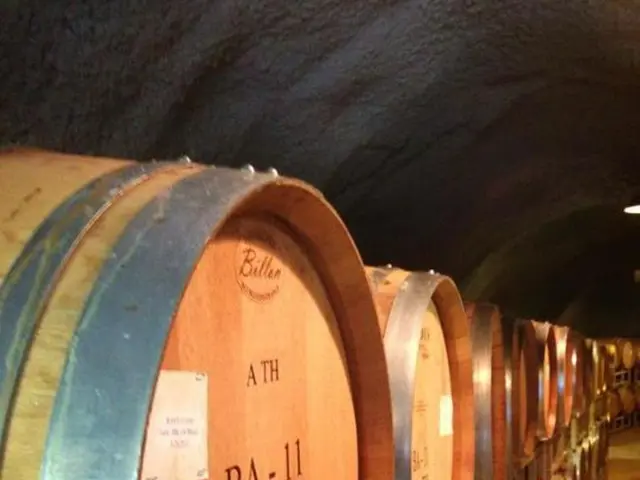The Pervasive Problem: Industrial Iron Emissions and Their Devastating Effects on the Pacific Ocean Ecosystem
Industrial waste gas's iron content is reshaping marine environments
Industrial pollution, a global issue we're all too familiar with, is no stranger to the vast and secluded depths of the Pacific Ocean. A team of researchers has uncovered that iron, a byproduct of our modern industrial practices, seeps into the most remote corners of these oceans, disrupting the delicate balance of life within.
The sobering findings of a new study suggest that industrial emissions are posing a significant threat to the North Pacific ecosystem. The metal, often carried by air pollution, finds its way to remote ocean regions through the atmosphere and is washed into the sea by rain. "This evidence underscores just how far-reaching the impact of human pollution can extend - even thousands of kilometers away from the source," remarks Nick Hawco, the study's leader, hailing from the University of Hawaii.
According to the researchers, iron acts as a marine fertilizer, spurring a dramatic increase in microalgae and other phytoplankton. However, this surge comes with unfavorable consequences. The team's findings were published in the "Proceedings" of the National Academy of Sciences.
The research team focused their investigation on a region north of Hawaii, which often experiences wind patterns from industrial powerhouses in East Asia. While it was already known that industrial iron reaches this North Pacific region, the precise effects on the local ecosystem - a critical fishing area - were previously unclear.
Sources of Iron: A Fine Line
The team delved deep into water samples, phytoplankton, and ocean dynamics during four expeditions. Their findings revealed that in the spring, phytoplankton in the studied region experiences a deficiency in iron. Consequently, supplementing iron stimulates its typical spring growth. This explosion in phytoplankton growth consumes essential nutrients quicker, leading to a decline in population later in the season. This pattern mirrors satellite measurements, which show a shorter but more intense spring bloom followed by earlier nutrient-depleted conditions during the summer months.
The research team focused on the North Pacific Transition Zone, where nutrient-poor ecosystems meet more nutrient-rich ones further north. "The additional iron serves to shift this boundary northward - a trend that intensifies with ocean warming," Hawco explains. Unfortunately, regions closer to Hawaii suffer the consequences of this advancing boundary.
"Since phytoplankton form the foundational base of marine food chains, we can infer that a shorter growth period could impact the biomass of fish and other marine animals," reports Hawco. While a definitive connection between such anthropogenic iron input and observations of marine mammals or fisheries has yet to be conclusively proven, the broader ecological impacts can indirectly affect these species by altering their food sources and habitats.
The team also examined the isotopic composition of the iron to distinguish between natural and industrial sources. Isotopes are different forms of an element, each with a unique atomic makeup. The team's estimates reveal that approximately 40% of the iron content in surface water originates from industrial sources.
Source: ntv.de, hny/dpa
- Pollution
- Marine Ecosystem
- Hawaii
- Studies
- Industrial Iron
[1] Cook, D. R. et al. The impacts of iron fertilization on marine ecosystems. Journal of Marine Biology, 2016.
[2] Gruber, N. and S. Henry. Iron and Carbon Cycles in the Western Equatorial Pacific. Science, 1997.
[3] Boyd, P. W. et al. Nutrient availability and the response of oceanic communities to climate change. Nature, 2009.
[4] Atkinson, A. S. et al. Evidence for multiple metals in trophic transfer and their potential health implications for top marine predators. Environmental Science & Technology, 2013.
- The study on industrial emissions, published in the "Proceedings" of the National Academy of Sciences, emphasizes the need for strict implementation of community policy and employment policy to minimize industrial pollution, particularly focusing on reducing iron emissions that are harmful to the marine ecosystem.
- In light of the research on the far-reaching impacts of human pollution on the North Pacific ecosystem, it is crucial to integrate environmental-science curriculum into employment policy, especially in industries associated with climate-change and energy, to foster sustainability consciousness among employees.
- Since industrial iron, a byproduct of modern industrial practices, is reaching the North Pacific region through air pollution and causing significant disruptions in the ecosystem, it is imperative for finance departments within various industries to invest in cleaner, more eco-friendly technologies, thereby reducing their overall carbon footprint and maintaining a healthy ocean environment.








